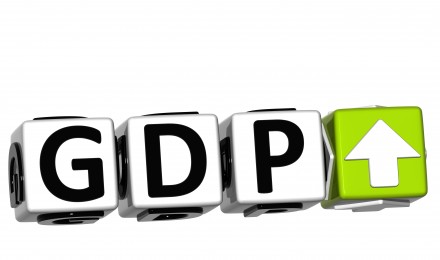The Department of Labor (DOL) recently released jobless claims for the week ending January 28th. The Bureau of Labor Statistics (BLS) also released the unemployment numbers for January. These two measures help to suggest that the overall employment situation for the country is improving. The surveys measure different aspects of who is working and who is not, and in both reports, the numbers are looking positive.
In the month of January the unemployment number dropped by 243,000, representing a 0.2% decrease over the December numbers. This brought the overall percentage of unemployed to 8.3%. The unemployment rate has been steadily declining since August, having fallen 0.8% in that time period. There is some skepticism of this number, since it measures those who are filing ongoing unemployment claims. The Employment Situation measures those who are actively looking for a job and filing ongoing unemployment claims. This number shows economist and investors how many people really do want to work, but are unable to find employment in the field they desire. The portion of the population who no longer file claims, but are still not working, because they have simply given up or their benefits have run out, are not included in these unemployment numbers. Precisely the reason the DOL also reports jobless claims numbers.
For the last week of January, initial jobless claims fell by 12,000 to 367,000, slightly lower than what was expected. More importantly than the number, though, is to look at the 4-week average. For the third week in a row the 4-week average has declined, and this chart shows that the overall trend for the past 2 years is a considerable decline. The jobless claims report measures those who have recently become unemployed and are filing their initial claim. The number accurately measures those who are becoming unemployed, and will help to provide a more realistic estimate of the total number of people who are currently without employment. Based on these numbers economists and investors can get a feel for how many people are currently without a job.
As the jobless claims and unemployment claims continue to go down, the economy will continue to gain strength. A healthy workforce is the only way the economy can also be healthy, and as corporations are realizing more profits and more demand, they have no choice but to hire more workers. These workers in turn cause greater production for the corporations. There is a cyclical drive, and people slowly returning to work is what sets that cycle in motion. While the claims tick down, we can compare them to the recent releases of the how the housing markets and manufacturing jobs are doing to get a feel for where the economy is going. At this point all indications are that America is getting back to work, and things are looking better. But they are taking a much slower pace than many people would like them to take.
The Department of Labor (DOL) recently released jobless claims for the week ending January 28th. The Bureau of Labor Statistics (BLS) also released the unemployment numbers for January. These two measures help to suggest that the overall employment situation for the country is improving. The surveys measure different aspects of who is working and who is not, and in both reports, the numbers are looking positive.
In the month of January the unemployment number dropped by 243,000, representing a 0.2% decrease over the December numbers. This brought the overall percentage of unemployed to 8.3%. The unemployment rate has been steadily declining since August, having fallen 0.8% in that time period. There is some skepticism of this number, since it measures those who are filing ongoing unemployment claims. The Employment Situation measures those who are actively looking for a job and filing ongoing unemployment claims. This number shows economist and investors how many people really do want to work, but are unable to find employment in the field they desire. The portion of the population who no longer file claims, but are still not working, because they have simply given up or their benefits have run out, are not included in these unemployment numbers. Precisely the reason the DOL also reports jobless claims numbers.
For the last week of January, initial jobless claims fell by 12,000 to 367,000, slightly lower than what was expected. More importantly than the number, though, is to look at the 4-week average. For the third week in a row the 4-week average has declined, and this chart shows that the overall trend for the past 2 years is a considerable decline. The jobless claims report measures those who have recently become unemployed and are filing their initial claim. The number accurately measures those who are becoming unemployed, and will help to provide a more realistic estimate of the total number of people who are currently without employment. Based on these numbers economists and investors can get a feel for how many people are currently without a job.
As the jobless claims and unemployment claims continue to go down, the economy will continue to gain strength. A healthy workforce is the only way the economy can also be healthy, and as corporations are realizing more profits and more demand, they have no choice but to hire more workers. These workers in turn cause greater production for the corporations. There is a cyclical drive, and people slowly returning to work is what sets that cycle in motion. While the claims tick down, we can compare them to the recent releases of the how the housing markets and manufacturing jobs are doing to get a feel for where the economy is going. At this point all indications are that America is getting back to work, and things are looking better. But they are taking a much slower pace than many people would like them to take.







